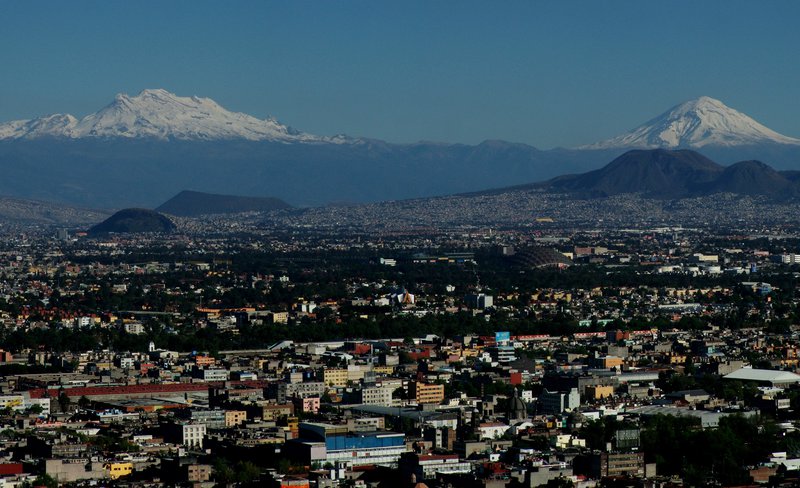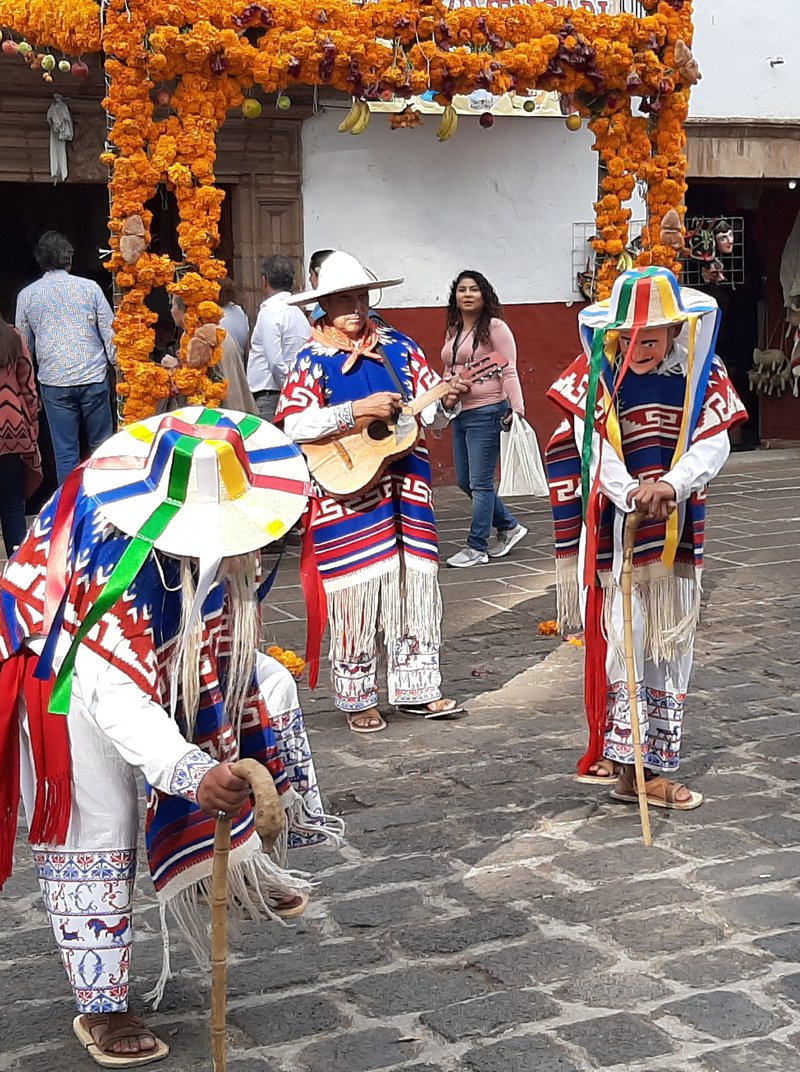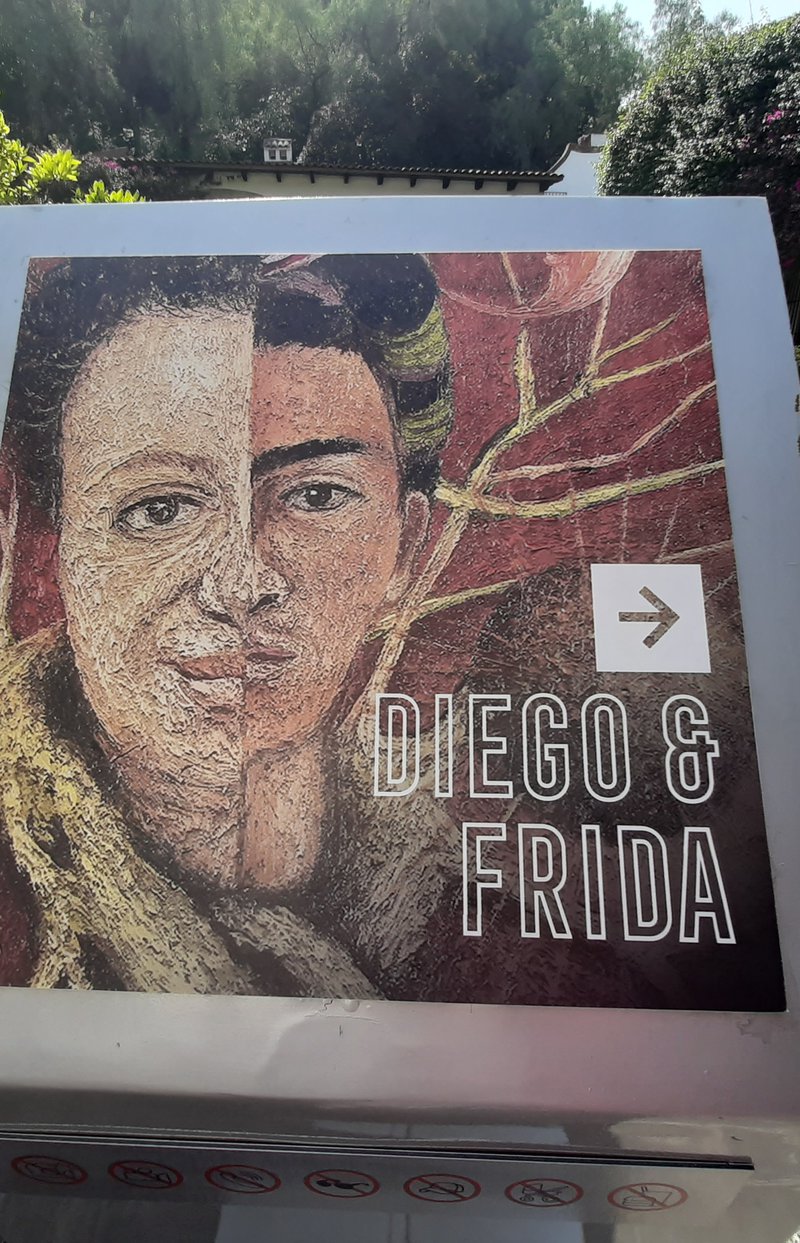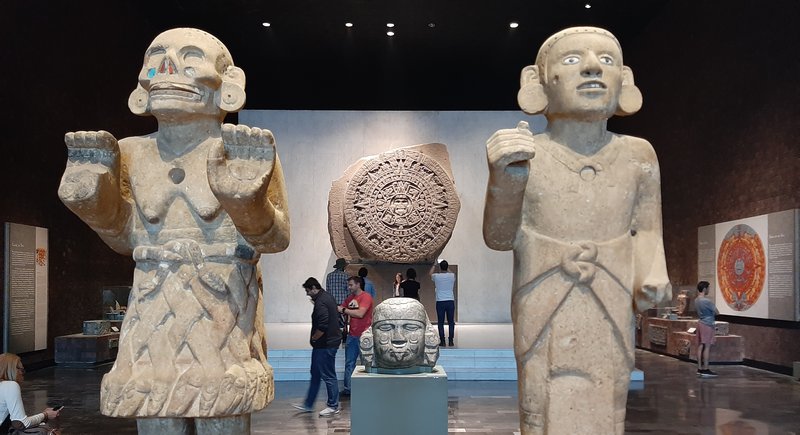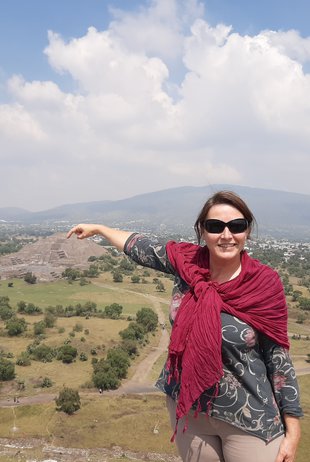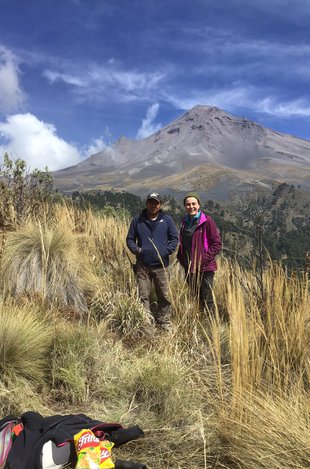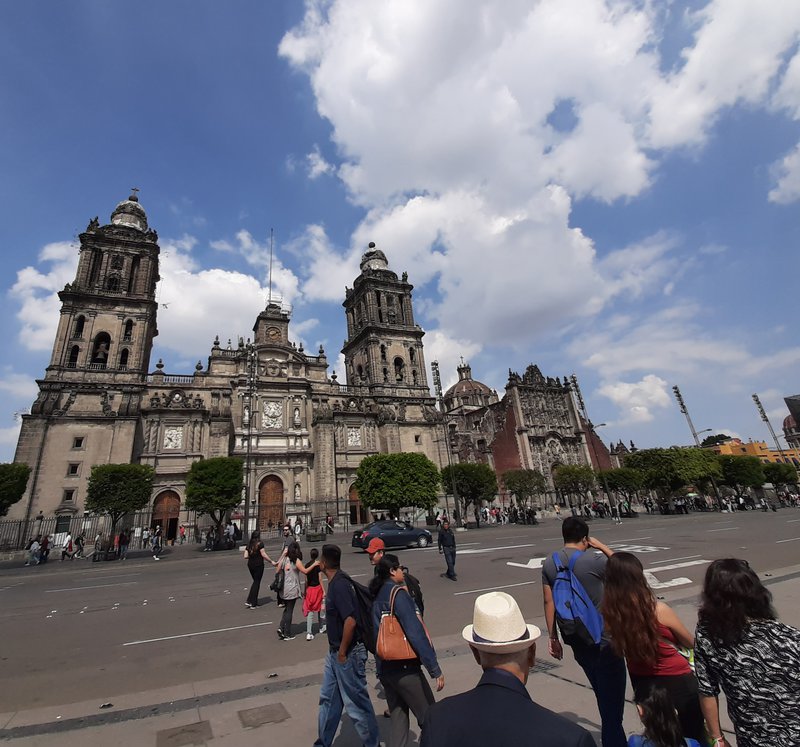Catalans Abroad
Dolors Ferrés López
Studie geology at the UAB and had her first job at the Natural Park of the Garrotxa Volcanic Zone.
City of eternal spring
“In general, Mexico offers many opportunities in the fields of environmental and earth sciences” “Mexico has a very wide and amazing culture of handmade products, of all different types and materials”
Why did you leave Catalonia?
I got the opportunity to work in El Salvador on some projects of geological hazard and risk with an NGO, in 1999. I always had a big desire to travel to other places and to know other realities, especially in Latin America, so I took the chance.
Why did you choose Mexico?
I came here to study my PhD, in 2006. At that time, the Universidad Nacional Autónoma de México (UNAM), was the one of the few Latin American countries that offered postgraduate studies on volcanology. The UNAM is a true public university, which offers a wide range of undergraduate and graduate programmes basically for free, and that receives people from all around the world. The UNAM community is more than 300,000 people.
How long have you lived there?
I have lived in Mexico City for just over 13 years, although during this time, I also lived in Villahermosa (Tabasco), in southeastern Mexico. Previously, I had been living in El Salvador for six years, so I am close to turning 20 years out of Catalonia.
Are you happy with the job opportunities you found in your adoptive country?
Yes, I am. Mexico is a land of volcanoes and I have had the opportunity to work both in their monitoring, in the National Center for Disaster Prevention, and in their study, through several projects of hazard evaluation at the university. In general, Mexico offers many opportunities in the fields of environmental and earth sciences. I currently work as an independent consultant, here in Mexico and in Central America. This last year, however, has not been very good. Every time there is a change of government here (regardless of its political colour) there is a certain paralysis of projects and hiring.
What do you miss most from home?
The sense of humour without doubt, to share the things that make you laugh.... For me, it is the aspect that best defines where you are from. The seasons of the year, as well. Mexico City is called the “eternal spring” and it’s very nice, but I miss a real autumn and a real winter. Mexico is enormous and you can find places, especially to the north, where the seasons are better defined, but it’s not easy to travel there frequently. Of course, I miss my friends and family, I would like to have the opportunity to share time with them more often for sightseeing or being around a table. Phones and social networks help a lot to keep in touch, although differences in the time zone make it difficult to be constant. And I also miss some of the food... I can find ham and sausage here but it’s not the same.
What do you take with you as a present from your new home when you go back to your own country?
Handicrafts, always handicrafts. You can ask my friends! In fact, they are a little tired of my gifts, but it is because Mexico has a very wide and amazing culture of handmade products, of all different types and materials. In each region you can find different beautiful hand crafts, so every time I go to Catalonia, I can take different things. Sometimes I also carry some things to eat that are not easily found there: jamaica flower, nopales (a kind of cactus) or spicy sweets.
What characterises your neighbourhood?
I currently live in a very quiet, almost boring neighbourhood, southwest of the city. They are apartment buildings where single families or professionals live who are outside during the day and return at night. But I am relatively close to places with a lot of life: markets, parks, and areas with cafes and shops. Some years ago, I lived at the south of the city, closer to UNAM, and the neighbourhoods there are more popular, more alive throughout the day.
Are there any places to avoid at all costs?
Maybe some colonias (neighbourhoods) in he city centre... but like many other cities in the world, almost everything can be visited depending on the time of day. What I definitely recommend avoiding is traffic! The subway is the best way to move around.
What is the best experience you had in your adoptive country?
To meet my husband and to discover with him of some of the most beautiful natural spaces in the country.
Do you plan to go back to Catalonia sometime soon?
No, not for the moment, maybe in a few years. I also have family here in Mexico and our plans are to continue living here and try to visit some regions that we still don’t know about in this immense and incredible country.
CATALANS ABROAD mexico city
SOME SUGGESTIONS:
Where are the best places for visitors to stay?
Uff! There are plenty. It depends on what kind of visit you would like to do. But “hostales”, are perhaps de best option.
What do you consider the highlights for any brief visit for the first time?
A difficult question for a country like Mexico with a capital that is one of the biggest cities in the world. You cannot miss the downtown: Zocalo, one of the big squares of the world, Templo Mayor, the center of Mexican culture, the National Palace with the paintings (murals) of Diego de Rivera, Alameda Central with the Bellas Artes building, the Revolution monument… Then Coyoacán, a neighbourhood south of the city, that was an old colonial town integrated into the city as it grew and where you can find the house of Frida Khalo and Diego Rivera, but more than that an excellent place to walk around and get to know the friendly atmosphere of the city. Finally, I strongly recommend visiting Teotihuacan, an archaeological site an hour and a half northeast of Mexico City, where you can visit one of the biggest centers of the Pre-classic and Classic cultures (before de Mexican Empire) in Central Mexico, which is one of the most impressive places I have ever seen.
And if visitors have more time or make a return visit?
To get to know Mexico better, and especially Mexico City, you must visit a market, get lost in its corridors and have some food there. There is almost one in each neighbourhood and they can be roofed or open, on the street (tianguis). Mexico is a country to wander around and marvel at its dynamism. If you have enough time and you like museums (there are near 200 museums in Mexico City) you must visit the Anthropological Museum, close to Chapultepec Park and Reforma Avenue. You need more than one day to visit it, but in two or three hours you can see the main saloon where some of the best pieces of the Mexican Empire are. In central Mexico, there are other incredible areas, such as Michoacan and Oaxaca, Chiapas and Yucatan. But if you plan to come to Mexico you have to decide what Mexico you would like to visit: the tropical one (Mesoamerica), the central one, or the northern regions. If you like volcanoes or simply sightseeing, I recommend visiting Paso de Cortés to see the active Popocatépetl and Iztaccihuatl volcanoes, some of the tallest and biggest in Mexico (it is possible to do this in one day from Mexico City). And if you have more days, Paricutín, in Michoacan States, one of the youngest volcanoes in the world that began to appear in a cornfield in 1943.
Can you recommend a place to have lunch with friends?
Any Canteen (“Cantina”) or any taqueria is a good place to meet friends, have some beer, or tequila, or mezcal and eat tacos. I especially like Cantina Rivera del Sur, a place where they serve Yucatecan food in Colonia Roma.
Where would you have a special dinner for two?
There are plenty of places to have a nice and special evening, with tasty food, especially in Colonia Roma and Colonia Condesa, as well in many other places around the city. You can find food from all around the world (I preferred Lebanese and Italian, Mediterranean flavour), but perhaps I would suggest looking for one of the restaurants that offers fusion cuisine based on traditional Mexican dishes (Rosetta or Azul Histórico).
When is the best time of the year to plan a visit?
From December to April, when it is more likely that it doesn’t rain. But there are other periods good to consider: the main one is from the last week of October until the first week of November, to join “Día de Muertos”, on November 2. During all this time it is possible to share the different cultural representations and activities around the celebration of the return of the beloved dead. Also, from November to March you can see the migration of Monarch butterflies, in the sanctuaries of the Michoacan State. The coming of the Monarchs are one of the biggest migrations of invertebrates of the world (they travel from Canada to Mexico to spend the winter here). A similar period is good to see whales in the Gulf of California. July is the month to see the fireflies in the Tlaxcala State, one of the most exciting natural shows that I have ever seen.
What is the best kept secret about the area?
In central Mexico the red tomato is called “jitomate”, derived from its nahuatl name “Xictomatl”. If you ask just for a tomato you get a green one, which is another type of this vegetable.
Leave a comment
Sign in.
Sign in if you are already a verified reader.
I want to become verified reader.
To leave comments on the website you must be a verified reader.
Note: To leave comments on the website you must be a verified reader and accept the conditions of use.

